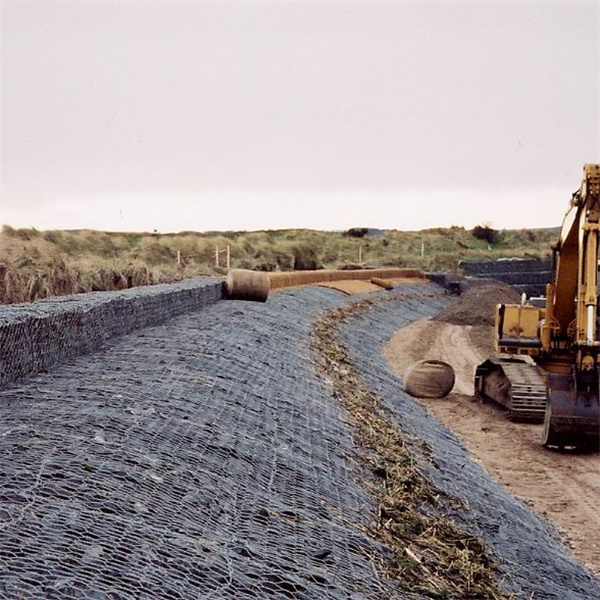សីហា . 21, 2024 06:46 Back to list
Exploring the Versatility and Applications of Gabion Hooks in Construction Projects
Understanding Gabion Hooks Essential Components for Effective Gabion Construction
Gabions have become increasingly popular in modern civil engineering and landscaping for their versatility, strength, and aesthetic appeal. Whether used for erosion control, retaining walls, or decorative landscaping elements, gabions are rock-filled wire cages that offer both structural stability and a natural look. A critical component of gabion construction that often goes unnoticed is the gabion hook. This article will explore the significance of gabion hooks, their types, and their installation process.
What are Gabion Hooks?
Gabion hooks are specialized fasteners designed to securely connect adjacent gabion baskets or panels. Made from durable materials such as galvanized steel, they are essential in ensuring that the structure remains intact and can withstand environmental pressures such as wind, water flow, and soil movement. Without proper fastening, gabions can shift, leading to structural failure and loss of efficacy in their intended purpose, such as controlling erosion or stabilizing slopes.
Types of Gabion Hooks
There are different types of gabion hooks, each designed for specific applications and installation methods
. The most common types include1. L-Shaped Hooks This type features a simple L design that easily connects two gabion panels at right angles. They are often used in corner installations, ensuring stability at junctions.
2. Straight Hooks Straight gabion hooks are typically used for fastening adjacent baskets in a straight line, providing a seamless connection that enhances the overall integrity of the structure.
3. Double Hooks For larger gabion structures, double hooks provide added security by looping around two connected baskets. This type of hook is advantageous in high-stress areas, where additional support is essential.
4. Custom Hooks Depending on the specific requirements of a project, custom-shaped hooks may be manufactured to meet unique design needs or challenges posed by the terrain.
gabion hooks

Installation of Gabion Hooks
The proper installation of gabion hooks is crucial for the effectiveness and longevity of gabion structures. Here’s a step-by-step guide to installing gabion hooks
1. Prepare the Site Ensure that the area where the gabions will be placed is adequately prepared, with the foundation level and stable enough to support the weight of the filled baskets.
2. Assemble Gabion Baskets Begin by placing the gabion baskets in the desired configuration. It’s essential to ensure that the baskets are correctly aligned and that the mesh is not obstructed.
3. Insert the Hooks Using the appropriate type of gabion hook, connect adjacent baskets by inserting the hooks into the pre-drilled holes or mesh openings. Ensure that the hooks are securely fastened and properly aligned.
4. Fill the Gabions Once the baskets are connected, fill them with the specified type of stone or rock material. The filling should be done carefully to avoid displacing the hooks.
5. Secure the Hooks After filling, double-check that all hooks are adequately secured. Sometimes, it might be necessary to bend or twist the hooks to ensure a snug fit.
6. Final Adjustments After filling and securing, assess the entire structure's stability. Make any necessary adjustments to ensure everything is firmly in place.
Conclusion
Gabion hooks are vital for the successful construction of gabion structures, providing enhanced stability and longevity. Understanding the different types of hooks and their proper installation can significantly impact the efficiency and effectiveness of gabion applications. As we continue to face challenges related to erosion and landscape stability, gabions and their components, like gabion hooks, will remain essential tools in our engineering and landscaping arsenals. Investing in high-quality gabion hooks and ensuring their proper use will lead to durable and aesthetically pleasing structures capable of withstanding the test of time.
-
Visualizing Gabion 3D Integration in Urban Landscapes with Rendering
NewsJul.23,2025
-
The Design and Sustainability of Gabion Wire Mesh Panels
NewsJul.23,2025
-
The Acoustic Performance of Gabion Sound Barriers in Urban Environments
NewsJul.23,2025
-
Mastering the Installation of Galvanized Gabion Structures
NewsJul.23,2025
-
Gabion Boxes: Pioneering Sustainable Infrastructure Across the Globe
NewsJul.23,2025
-
Custom PVC Coated Gabion Boxes for Aesthetic Excellence
NewsJul.23,2025
-
Installation Tips for Gabion Wire Baskets in Erosion Control Projects
NewsJul.21,2025






